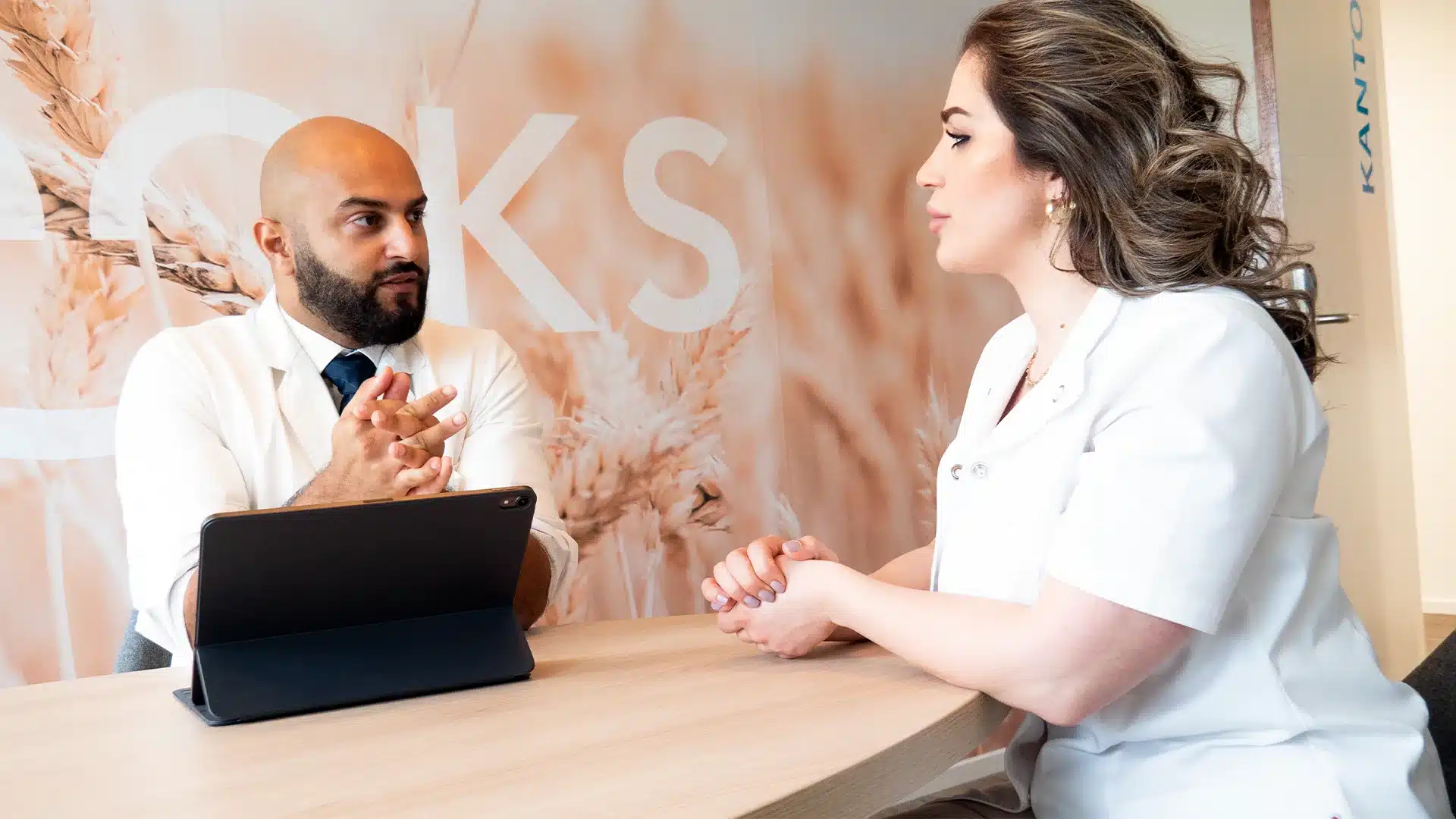But when do you choose which procedure?
An eyelid lift and a direct brow lift are both cosmetic procedures aimed at improving the appearance around the eyes, but they have different goals and techniques.
Upper eyelid correction
An upper eyelid correction is chosen for cosmetic reasons if someone suffers from excess skin or fat on the upper eyelids, which leads to a tired or aged appearance. For functional reasons, someone may choose an upper eyelid correction if the excess skin of the upper eyelid limits the field of vision or if the eyelid feels heavy and puts pressure on the eyes. Complaints such as: a limited field of vision, tired or heavy eyes, irritation and inflammation, difficulty using glasses or contact lenses and reduced eyelid function can be contributing factors.
When excess skin on the upper eyelid begins to hang over the eyelashes, it can restrict your field of vision, especially on the upper and sides (peripheral vision). This can cause problems with daily activities such as reading, driving, or recognizing people and objects at the edges of your field of vision. In addition, the extra skin can cause a heavy feeling on the eyelids, leading to tired eyes, especially at the end of the day. This can also be accompanied by headaches or tension in the forehead, because the eyebrows are unconsciously lifted to improve the field of vision. Furthermore, excess skin can interfere with the normal function of the eyelid, leading to irritation or inflammation. It can make the eyes more susceptible to infections, dryness and redness. Sometimes, it also causes friction between the skin folds, which can cause irritation. Another complaint of excess skin can be that it gets in the way when wearing glasses, because the skin rests on the glasses or affects the fit. Contact lenses can be more difficult to insert or remove due to the pressure of excess skin.
An upper eyelid correction removes excess skin and sometimes fat and muscle tissue, which restores the function of the eyelid and reduces or eliminates symptoms.
Lower eyelid correction
For cosmetic reasons, a lower eyelid correction is a good choice if someone suffers from bags, bags or wrinkles under the eyes and wants to reduce these for a more youthful appearance.
Lower eyelid correction for functional reasons is less common, but may be necessary if bags under the eyes cause irritation or discomfort.
Direct eyebrow lift
A direct brow lift can be considered if the eyebrows have started to droop, giving a tired or gloomy appearance, and someone wants a fresher look. If drooping eyebrows are pressing on the upper eyelids and limiting the field of vision, a brow lift has a functional purpose where this problem can be remedied.
